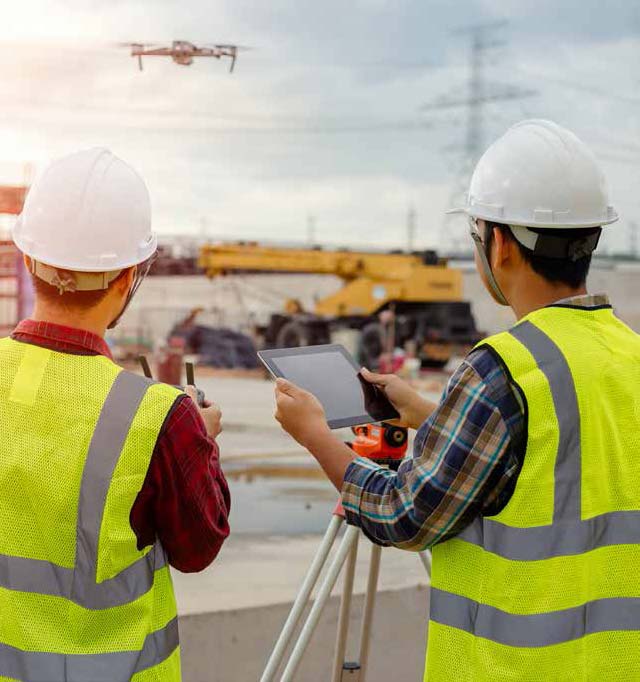IoT leading the way to a safer, smarter future for the construction industry
 Worker safety remains a top construction-industry priority. Even so, according to the U.S. Department of Labor, construction accounts for just over 20% of private industries fatalities, and the industry’s median days away from work due to injury or illness is 50% higher than all other U.S. industries.
Worker safety remains a top construction-industry priority. Even so, according to the U.S. Department of Labor, construction accounts for just over 20% of private industries fatalities, and the industry’s median days away from work due to injury or illness is 50% higher than all other U.S. industries.
This is due in large part to the physically challenging construction environment with heavy materials and equipment and hundreds of workers working at elevated heights. Until recently, safety leaders have been forced to rely on outdated, manual methods to detect and respond to safety issues, such as visual checks (or audible calls for help) to identify a possible injury—or air horns to trigger an evacuation.
NEW TECHNOLOGIES TO THE RESCUE
The good news is that technology is changing the construction safety landscape, giving project leaders and teams new tools to communicate from anywhere on site, detect and document safety issues, and monitor what’s happening across project sites. The spread of the Internet of Things (IoT) at the jobsite, such as wearable devices, equipment sensors, drones and more, act as extra safety personnel, automatically capturing data and monitoring what’s happening in the field more efficiently and effectively than humanly possible.
For example, drones can survey a jobsite and gather environmental or other site-specific information (think loose roofing) that would be difficult to detect otherwise. Wearable technology, including devices that clip onto a worker’s waist belt, can quantify worker activity on site (location, fall events, etc.) and provide a direct line of communication between workers and supervisors. In addition, sensors tagged onto equipment/machinery (or placed around the jobsite) can monitor realtime machine location and operation (or environmental conditions such as air quality or temperature) to alert supervisors to unauthorized equipment operators (or high temperatures or substances in the air) that require immediate attention.
These technologies are enabling a shift in construction safety and risk identification, management and culture by powering:
■ Real-time safety reporting. Emerging technologies enable workers to report hazards or signal distress from anywhere on site with the push of a button, eliminating the need to leave the work area or use a cell phone to get help. With real-time alerts, safety supervisors can improve response and help contain risk exposure from nearby workers entering unsafe areas or walking into unsafe conditions to help an injured colleague.
■ Behavior modification. If you can’t measure a problem, you can’t manage it, and emerging IoT-enabled solutions are replacing assumptions or after-the-fact anecdotes with objective, real-time data to develop smarter safety insights. By using technology to report and reveal the factors that contributed to an incident, construction firms can identify the training, tools or practices that are needed to prevent similar situations from happening in the future.
Tech tools also help employees check into a safety mind-set each time they step onto the jobsite and provide an opportunity to jump-start other corporate safety initiatives like morning stretch-and- flex sessions or toolbox talks to warm up for the day and review site- or task-specific hazards.
■ Data to identify trends and mitigate risks. By collecting objective safety data such as time, location, conditions on site or location of nearby workers, IoT tech can add valuable context to an incident and help streamline claims reporting/investigation. With a more accurate picture of site safety and risks, firms can proactively adjust their practices to get ahead of potential safety incidents, better protect workers, and keep projects moving.
It’s important to note that technology is just one part of a comprehensive safety program that must involve management buy-in, ongoing education and training, open communication, and regular coaching. With the right organizational mind-set, new technology tools to participate in safety and communicate hazards, and data to identify risks and drive down incidents, contractors can enable new levels of safety and drive the construction industry to a safer, smarter, stronger future.
_______________________________________________________________________________________
 Pete Schermerhorn is president and CEO of Triax Technologies, a Norwalk, CTbased technology company that develops innovative IoT solutions for the construction industry. Triax was selected as
Pete Schermerhorn is president and CEO of Triax Technologies, a Norwalk, CTbased technology company that develops innovative IoT solutions for the construction industry. Triax was selected as
the 2018 Gold winner for the Best IoT Service—Commercial and Industrial from IoT Innovator magazine for changing the way contractors manage resources, safety and risk across their project portfolios. And its Spot-r EvacTag was named the 2018 New Product of the Year for Emergency Response by Occupational Health & Safety magazine. You can connect with him at Pete@TriaxTec.com




